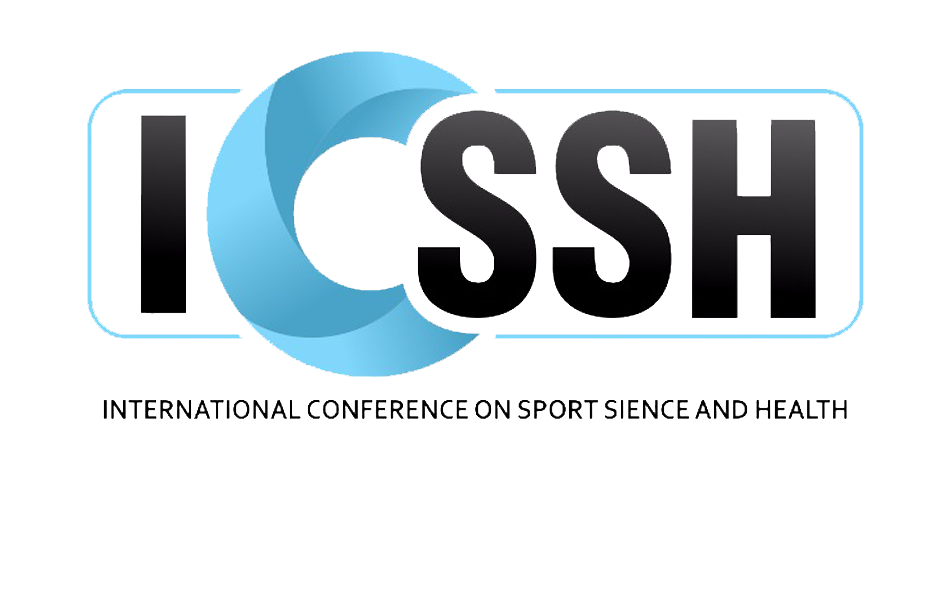The impact of the blended learning system on the learning outcomes of physical education and health students: a systematic review
DOI:
https://doi.org/10.56003/jse.v3i2.163Keywords:
blended learning, physical education, sports, college studentsAbstract
Blended learning is a learning model that is currently receiving high attention from lecturers and students in recent years. However, with so many studies addressing this issue, there has not been a systematic review that specifically analyzes all studies related to the impact of the blended learning system in physical education at the tertiary level. Thus, this study aims to evaluate the overall effect of blended learning in physical education at the university level. Search literature studies obtained using Google Scholar, PubMed, Eric and Science Direct databases. In searching the literature, researchers used the Preferred Reporting Items for Systematic Review and Meta-Analyses (PRISMA) guidelines. The literature search strategy includes the following predefined keyword combinations: “blended learning” AND “physical education” AND “sports” AND “college students”. All studies were extracted from the database and data analysis was carried out using the Mendeley application to filter out articles that were duplicates or did not match the research studies. Of the 665 publications obtained from the Google Scholar database, DOAJ, Eric and Science Direct, after passing through the screening, only 13 articles were found that matched the research intervention. The conclusion from the data analysis that has been done explains that the blended learning model is very good at improving students' motor skills. Subsequent significant improvements can also be found at the understanding or cognitive level of students using the blended learning method. In addition, volleyball is one of the most researched and studied sports in all sports, such as badminton, dance, football, athletics, and martial arts. Therefore, further research is expected to be able to dig deeper into the impact of blended learning on increasing student attitude scores and optimizing the use of blended in athletics or martial arts.
Downloads
References
Adi, S., & Fathoni, A. F. (2019). Development of Learning Model Based on Blended Learning in Sports School. 8–12. https://doi.org/10.2991/ACPES-19.2019.2
Aji, C. A., & Khan, M. J. (2019). The Impact of Active Learning on Students’ Academic Performance. Open Journal of Social Sciences, 07(03), 204–211. https://doi.org/10.4236/JSS.2019.73017
Al Bataineh, K. B., Ahmed Banikalef, A. A., & H. Albashtawi, A. (2019). The Effect of Blended Learning on EFL Students’ Grammar Performance and Attitudes: An Investigation of Moodle. SSRN Electronic Journal. https://doi.org/10.2139/SSRN.3367595
Awidi, I. T., & Paynter, M. (2019). The impact of a flipped classroom approach on student learning experience. Computers & Education, 128, 269–283. https://doi.org/10.1016/J.COMPEDU.2018.09.013
Balakrishnan, A., Puthean, S., Satheesh, G., Unnikrishnan, M. K., Rashid, M., Nair, S., & Thunga, G. (2021). Effectiveness of blended learning in pharmacy education: A systematic review and meta-analysis. PloS One, 16(6). https://doi.org/10.1371/JOURNAL.PONE.0252461
Bayyat, M. (2020). Blended learning: A new approach to teach ballet technique for undergraduate students. Turkish Online Journal of Distance Education. https://doi.org/10.17718/tojde.727979
Behzadnia, B., Adachi, P. J. C., Deci, E. L., & Mohammadzadeh, H. (2018). Associations between students’ perceptions of physical education teachers’ interpersonal styles and students’ wellness, knowledge, performance, and intentions to persist at physical activity: A self-determination theory approach. Psychology of Sport and Exercise, 39, 10–19. https://doi.org/10.1016/J.PSYCHSPORT.2018.07.003
Chandler, J., Cumpston, M., Li, T., Page, M., Welch, V., Higgins, J., & Thomas, J. (2022). Cochrane Handbook for Systematic Reviews of Interventions. Cochrane Training. https://training.cochrane.org/handbook/current
Chao, H. W., Wu, C. C., & Tsai, C. W. (2021). Do socio-cultural differences matter? A study of the learning effects and satisfaction with physical activity from digital learning assimilated into a university dance …. Computers & Education. https://www.sciencedirect.com/science/article/pii/S0360131521000270
Chiang, T. H. C., Yang, S. J. H., & Yin, C. (2019). Effect of gender differences on 3-on-3 basketball games taught in a mobile flipped classroom. Interactive Learning Environments, 27(8), 1093–1105. https://doi.org/10.1080/10494820.2018.1495652
Edward, C. N., Asirvatham, D., & Johar, M. G. M. (2018). Effect of blended learning and learners’ characteristics on students’ competence: An empirical evidence in learning oriental music. Education and Information Technologies, 23(6), 2587–2606. https://doi.org/10.1007/S10639-018-9732-4
Freeman, S., Eddy, S. L., McDonough, M., Smith, M. K., Okoroafor, N., Jordt, H., & Wenderoth, M. P. (2014). Active learning increases student performance in science, engineering, and mathematics. Proceedings of the National Academy of Sciences of the United States of America, 111(23), 8410–8415. https://doi.org/10.1073/PNAS.1319030111/SUPPL_FILE/PNAS.1319030111.ST04.DOCX
Fu, Q. K., & Hwang, G. J. (2018). Trends in mobile technology-supported collaborative learning: A systematic review of journal publications from 2007 to 2016. Computers & Education, 119, 129–143. https://doi.org/10.1016/J.COMPEDU.2018.01.004
García-Hermoso, A., Alonso-Martínez, A. M., Ramírez-Vélez, R., Pérez-Sousa, M. Á., Ramírez-Campillo, R., & Izquierdo, M. (2020). Association of Physical Education with Improvement of Health-Related Physical Fitness Outcomes and Fundamental Motor Skills Among Youths: A Systematic Review and Meta-analysis. JAMA Pediatrics, 174(6), e200223–e200223. https://doi.org/10.1001/JAMAPEDIATRICS.2020.0223
Genc, H., & Ali, G. K. (2019). Examination of the Effect of Badminton Education on Physical and Selected Performance Characteristics. In Journal of Education and Learning (Vol. 8, Issue 6, pp. 47–55).
Gunawan, G., Firmansyah, D., & Widiastuti, W. (2019). Effect of interactive multimedia learning to learn skills of students sports volleyball. Journal of Education, Health …. https://apcz.umk.pl/JEHS/article/view/7407
Halverson, L. R., & Graham, C. R. (2019). Learner Engagement in Blended Learning Environments: A Conceptual Framework. Online Learning, 23(2), 145–178.
Hasibuan, R., Siregar, S., Bangun, S. Y., & ... (2021). The Effectiveness of the by doing Model in Increasing the Learning Outcomes of Volley Ball Reservation at Sports Science Faculty. … Research and Critics …. https://bircu-journal.com/index.php/birci/article/view/3290
Hill, K. (2018). Homework in Physical Education? A Review of Physical Education Homework Literature. Journal of Physical Education, Recreation & Dance, 89(5), 58–63. https://doi.org/10.1080/07303084.2018.1440263
Hung, H. C., Shwu-Ching Young, S., & Lin, K. C. (2017). Exploring the effects of integrating the iPad to improve students’ motivation and badminton skills: a WISER model for physical education. Technology, Pedagogy and Education, 27(3), 265–278. https://doi.org/10.1080/1475939X.2017.1384756
Keengwe, J., & Agamba, J. J. (2015). Models for improving and optimizing online and blended learning in higher education. IGI Global book series Advances in Higher Education and Professional Development (AHEPD). http://www.igi-global.com/publish/
Kizilcec, R. F., Pérez-Sanagustín, M., & Maldonado, J. J. (2017). Self-regulated learning strategies predict learner behavior and goal attainment in Massive Open Online Courses. Computers & Education, 104, 18–33. https://doi.org/10.1016/J.COMPEDU.2016.10.001
Leech, K. A., Roemmich, R. T., Gordon, J., Reisman, D. S., & Cherry-Allen, K. M. (2022). Updates in Motor Learning: Implications for Physical Therapist Practice and Education. Physical Therapy, 102(1), 1–9. https://doi.org/10.1093/PTJ/PZAB250
Liao, X., Li, Y., Huang, Q., Huang, S., Tang, Q., Liao, X., Li, Y., Huang, Q., Huang, S., & Tang, Q. (2020). Research and Practice of Flip Classroom Based on WeChat Platform Combined with Formative Evaluation in Teaching. Creative Education, 11(8), 1552–1560. https://doi.org/10.4236/CE.2020.118113
Lin, Y. N., Hsia, L. H., Sung, M. Y., & Hwang, G. H. (2019). Effects of integrating mobile technology-assisted peer assessment into flipped learning on students’ dance skills and self-efficacy. Interactive Learning Environments, 27(8), 995–1010. https://doi.org/10.1080/10494820.2018.1461115
Liu, M., Shi, Y., Pan, Z., Li, C. L., Pan, X., & Lopez, F. (2020). Examining middle school teachers’ implementation of a technology-enriched problem-based learning program: Motivational factors, challenges, and strategies. Journal of Research on Technology in Education, 53(3), 279–295. https://doi.org/10.1080/15391523.2020.1768183
Martin, F., & Bolliger, D. U. (2018). Engagement Matters: Student Perceptions on the Importance of Engagement Strategies in the Online Learning Environment. Online Learning, 22(1), 205–222. https://doi.org/10.24059/olj.v22i1.1092
Mohamed, A. A.-H. (2020). A training program supported by VISUAL BASIC technology and its effect on performance level of Spiking in volleyball. Assiut Journal of Sport Science and Arts. https://journals.ekb.eg/article_147619.html
Mohamed Shaffril, H. A., Samah, A. A., Samsuddin, S. F., & Ali, Z. (2019). Mirror-mirror on the wall, what climate change adaptation strategies are practiced by the Asian’s fishermen of all? Journal of Cleaner Production, 232, 104–117. https://doi.org/10.1016/J.JCLEPRO.2019.05.262
Norris, L. (2015). Learning to Teach Using ICT in the Secondary School. A Companion to School Experience. Journal of Interactive Media in Education, 11(1), 1–3. https://doi.org/10.5334/JIME.AT
Page, M. J., McKenzie, J. E., Bossuyt, P. M., Boutron, I., Hoffmann, T. C., Mulrow, C. D., Shamseer, L., Tetzlaff, J. M., Akl, E. A., Brennan, S. E., Chou, R., Glanville, J., Grimshaw, J. M., Hróbjartsson, A., Lalu, M. M., Li, T., Loder, E. W., Mayo-Wilson, E., McDonald, S., Moher, D. (2021). The PRISMA 2020 statement: an updated guideline for reporting systematic reviews. BMJ (Clinical Research Ed.), 372. https://doi.org/10.1136/BMJ.N71
Papastergiou, M., Natsis, P., Vernadakis, N., & Antoniou, P. (2021). Introducing tablets and a mobile fitness application into primary school physical education. Education and Information Technologies, 26(1), 799–816. https://doi.org/10.1007/S10639-020-10289-Y
Perdima, F. E., Suwarni, S., & Gazali, N. (2022). Educational technology in physical education learning: A bibliometric analysis using Scopus database. SPORT TK-Revista EuroAmericana de Ciencias Del Deporte, 14–14. https://doi.org/10.6018/SPORTK.517091
Petsilas, P., Leigh, J., Brown, N., & Blackburn, C. (2019). Embodied reflection – exploring creative routes to teaching reflective practice within dance training. Journal of Dance and Somatic Practices, 11(2), 177–195. https://doi.org/10.1386/JDSP_00004_1
Pizzi, M. A. (2014). Blended learning pedagogy: the time is now! Occupational Therapy in Health Care, 28(3), 333–338. https://doi.org/10.3109/07380577.2014.908479
Qian, X., & Li, X. (2022). Based on Fuzzy Comprehensive Evaluation, the Online and Offline Hybrid Teaching Mode of Physical Education Courses is Constructed. Security and Communication Networks, 2022, 1–18. https://doi.org/10.1155/2022/8571077
Rahmi, U., & Darmawan, D. (2018). Blog Folio in Blended Learning: a Development of Students’ Information Processing Skills in Digital Age. Al-Ta Lim Journal, 25(2), 128–134. https://doi.org/10.15548/JT.V25I2.369
Reidsema, C., Hadgraft, R., & Kavanagh, L. (2017). Introduction to the Flipped Classroom. The Flipped Classroom, 3–14. https://doi.org/10.1007/978-981-10-3413-8_1
Rodriquez, E. I. S., Dwiyogo, W. D., & Supriyadi, S. (2020). Blended Learning Matakuliah Sepakbola untuk Mahasiswa Pendidikan Jasmani Kesehatan dan Rekreasi. Jurnal Pendidikan: Teori, Penelitian, Dan Pengembangan, 5(2), 206. https://doi.org/10.17977/JPTPP.V5I2.13171
Shih, W. L., & Tsai, C. Y. (2017). Students’ perception of a flipped classroom approach to facilitating online project-based learning in marketing research courses. Australasian Journal of Educational Technology, 33(5), 32–49. https://doi.org/10.14742/AJET.2884
Singh, J., Steele, K., & Singh, L. (2021). Combining the Best of Online and Face-to-Face Learning: Hybrid and Blended Learning Approach for COVID-19, Post Vaccine, & Post-Pandemic World. Https://Doi.Org/10.1177/00472395211047865, 50(2), 140–171. https://doi.org/10.1177/00472395211047865
Suartama, I. K., Setyosari, P., Sulthoni, & Ulfa, S. (2019). Development of an Instructional Design Model for Mobile Blended Learning in Higher Education. International Journal of Emerging Technologies in Learning (IJET), 14(16), 4–22. https://doi.org/10.3991/IJET.V14I16.10633
Suddee, N. (2019). The Physical Education Instructional Model Based on Active Learning With Video Model To Promote Teaching Skill And Personal Awareness Of Teaching Thai …. Scholar: Human Sciences, 11(2), 412–426. http://www.assumptionjournal.au.edu/index.php/Scholar/article/view/4341
Sudjimat, D. A., Nyoto, A., & Romlie, M. (2020). Interdisciplinary Project-Based Learning (Cetakan I). Media Nusa Creative.
Suwiwa, I. G. (2021). Effectiveness of Project Based Learning in Blended Learning Setting to Increase Student Knowledge and Skills in Pencak Silat. Jurnal Pendidikan Jasmani Dan Olahraga, 6(2), 262–267. https://doi.org/https://doi.org/10.17509/jpjo.v6i2.38583
Tian, C., Zhou, Q., & Yang, B. (2022). Reform and Intelligent Innovation Path of College Football Teaching and Training Based on Mixed Teaching Mode. Mobile Information Systems, 2022. https://doi.org/10.1155/2022/8436138
Tiara, O. R., & Usman, O. (2020). The Effect of Problem Based Learning (Pbl), Online Class and Blended Learning on Thinking Critical Thinking of Students. SSRN Electronic Journal. https://doi.org/10.2139/SSRN.3643337
Tsai, H. Y. S., Shillair, R., & Cotten, S. R. (2017). Social Support and “Playing Around”: An Examination of How Older Adults Acquire Digital Literacy with Tablet Computers. Journal of Applied Gerontology : The Official Journal of the Southern Gerontological Society, 36(1), 29–55. https://doi.org/10.1177/0733464815609440
Ulstad, S. O., Halvari, H., Sørebø, Ø., & Deci, E. L. (2016). Motivation, Learning Strategies, and Performance in Physical Education at Secondary School. Advances in Physical Education, 06(01), 27–41. https://doi.org/10.4236/APE.2016.61004
Valtonen, T., Leppänen, U., Hyypiä, M., Kokko, A., Manninen, J., Vartiainen, H., Sointu, E., & Hirsto, L. (2021). Learning environments preferred by university students: a shift toward informal and flexible learning environments. Learning Environments Research, 24(3), 371–388. https://doi.org/10.1007/S10984-020-09339-6/TABLES/4
Xie, X., Ward, P., Oh, D., Li, Y., Atkinson, O., Cho, K., & Kim, M. (2021). Preservice physical education teacher’s development of adaptive competence. Journal of Teaching in Physical Education, 40(4), 538–546. https://doi.org/10.1123/JTPE.2019-0198
Xu, W., Xiong, W., Shao, Z., & Li, Y. (2021). Analysis of effectiveness and performance prediction of sports flipped classroom teaching based on neural networks. In Scientific Programming. hindawi.com. https://www.hindawi.com/journals/sp/2021/5284457/
Yang, K., Kim, S., Oh, D. G., Lee, H., & Lee, J. (2021). KCI vs. WoS: Comparative Analysis of Korean and International Journal Publications in Library and Information Science. Journal of Information Science Theory and Practice, 9(3), 76–106. https://doi.org/10.1633/JISTAP.2021.9.3.6
Yuan, K., Aftoni, A., & Çobanoğlu, Ö. (2020). The Effect of Problem-Based Learning Model and Blended Learning Model to Metacognitive Awareness as a Reflection Towards a New Normal Era. Jurnal Pendidikan Teknologi Dan Kejuruan, 26(2), 183–188. https://doi.org/10.21831/JPTK.V26I2.32783
Zeller, J. (2017). Reflective Practice in the Ballet Class: Bringing Progressive Pedagogy to the Classical Tradition. Journal of Dance Education, 17(3), 99–105. https://doi.org/10.1080/15290824.2017.1326052
Zheng, W., Ma, Y.-Y., & Lin, H.-L. (2021a). Research on Blended Learning in Physical Education During the COVID-19 Pandemic: A Case Study of Chinese Students. Journal SAGE Open, 11(4). https://doi.org/10.1177/21582440211058196

Downloads
Published
How to Cite
Issue
Section
License
Copyright (c) 2022 Muhammad Hamzah Pratama, Roesdiyanto

This work is licensed under a Creative Commons Attribution-ShareAlike 4.0 International License.
















